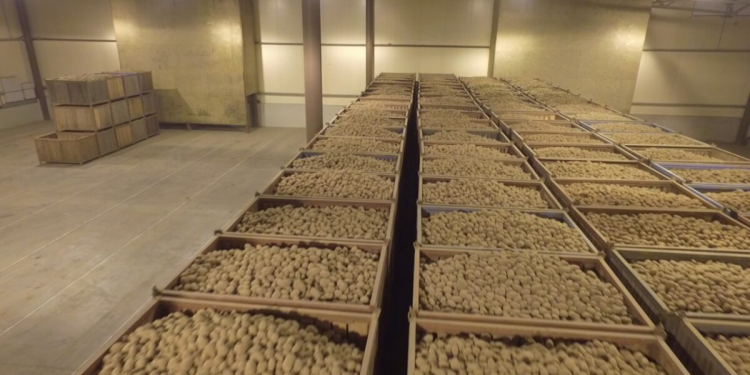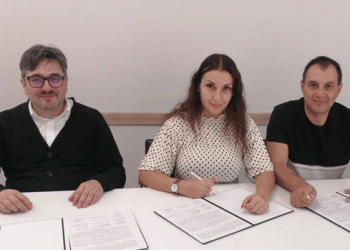There was a seminar in Potato Lorkh Institute from 16 to 18 November about law regulation and methods of assessing the quality of seed potatoes (selection, tuber analysis, diagnosis of pathogens).
We will publish an overview of some of the workshop materials.
One of the sections that we discussed with the participants of the seminar was the storage of seed potatoes. Dismantled the main types of storages, the peculiarities of storing batches, depending on the purpose. Pros and cons of arched and frame vaults.
The main idea is that the potato storage is not a hospital. If a batch of potatoes is of poor quality, then even good storage will not fix the situation.
Potato storage technology largely depends on the initial quality of the tubers, which is determined by the tuber analysis, which we will also talk about later in our reviews.
There are several storage methods. Bulk is the cheapest method, since potatoes are placed in bulk in a continuous layer in one room. However, it has significant drawbacks – the complexity of the placement of tubers by varieties, the impossibility of maintaining various temperature and humidity storage regimes in the case of placing potatoes for various purposes, the difficulty of preventing the germination of seed potato tubers in spring and during planting, especially in its final part.
The secret storage method is intended for seed potatoes and, especially, for seed farms growing various varieties and their reproductions. The disadvantage of this method is the reduction by 1/3 of the utilization factor of the useful area of the storage room, the inconvenience of loading tubers into bins and their unloading, the difficulty of preventing premature germination of tubers during spring unloading during planting.
Sectional spoob – potatoes are placed in completely isolated sections of various capacities. The most progressive storage method, since it allows differentiated maintenance of the appropriate temperature and humidity storage regime, depending on the purpose of potatoes – seed, food, intended for industrial processing.
The container method is the most expensive, since it is associated with the need to manufacture containers, as well as the use of various loading and unloading means for moving containers, stacking them and unloading them; mechanisms for their unloading.
The positive is high maneuverability, simultaneous storage of various varieties and reproductions in one room, delivery of tubers to the room for warming up and commercial preparation, delivery in fractions back to the place of further storage after bulkhead and calibration, etc., a high degree of mechanization of work.








